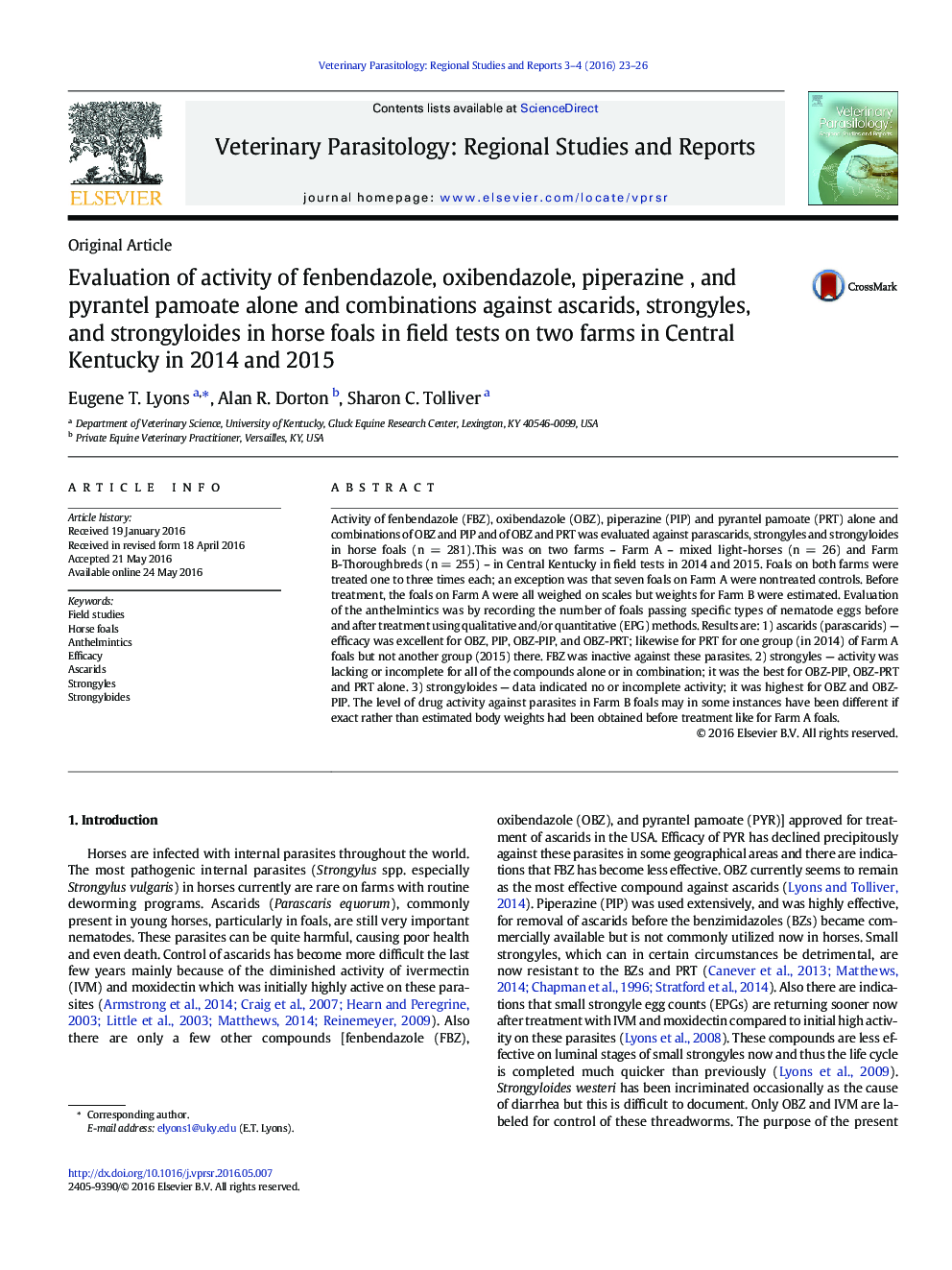| Article ID | Journal | Published Year | Pages | File Type |
|---|---|---|---|---|
| 2472753 | Veterinary Parasitology: Regional Studies and Reports | 2016 | 4 Pages |
•Up-to-date (2014–2015) activity of anthelmintics on horse parasites in field tests•Evaluated were fenbendazole, oxibendazole, piperazine, pyrantel pamoate and combinations.•Parasites were ascarids, strongyles and strongyloides determined by identification of their eggs in EPGs.
Activity of fenbendazole (FBZ), oxibendazole (OBZ), piperazine (PIP) and pyrantel pamoate (PRT) alone and combinations of OBZ and PIP and of OBZ and PRT was evaluated against parascarids, strongyles and strongyloides in horse foals (n = 281).This was on two farms – Farm A – mixed light-horses (n = 26) and Farm B-Thoroughbreds (n = 255) – in Central Kentucky in field tests in 2014 and 2015. Foals on both farms were treated one to three times each; an exception was that seven foals on Farm A were nontreated controls. Before treatment, the foals on Farm A were all weighed on scales but weights for Farm B were estimated. Evaluation of the anthelmintics was by recording the number of foals passing specific types of nematode eggs before and after treatment using qualitative and/or quantitative (EPG) methods. Results are: 1) ascarids (parascarids) — efficacy was excellent for OBZ, PIP, OBZ-PIP, and OBZ-PRT; likewise for PRT for one group (in 2014) of Farm A foals but not another group (2015) there. FBZ was inactive against these parasites. 2) strongyles — activity was lacking or incomplete for all of the compounds alone or in combination; it was the best for OBZ-PIP, OBZ-PRT and PRT alone. 3) strongyloides — data indicated no or incomplete activity; it was highest for OBZ and OBZ-PIP. The level of drug activity against parasites in Farm B foals may in some instances have been different if exact rather than estimated body weights had been obtained before treatment like for Farm A foals.
